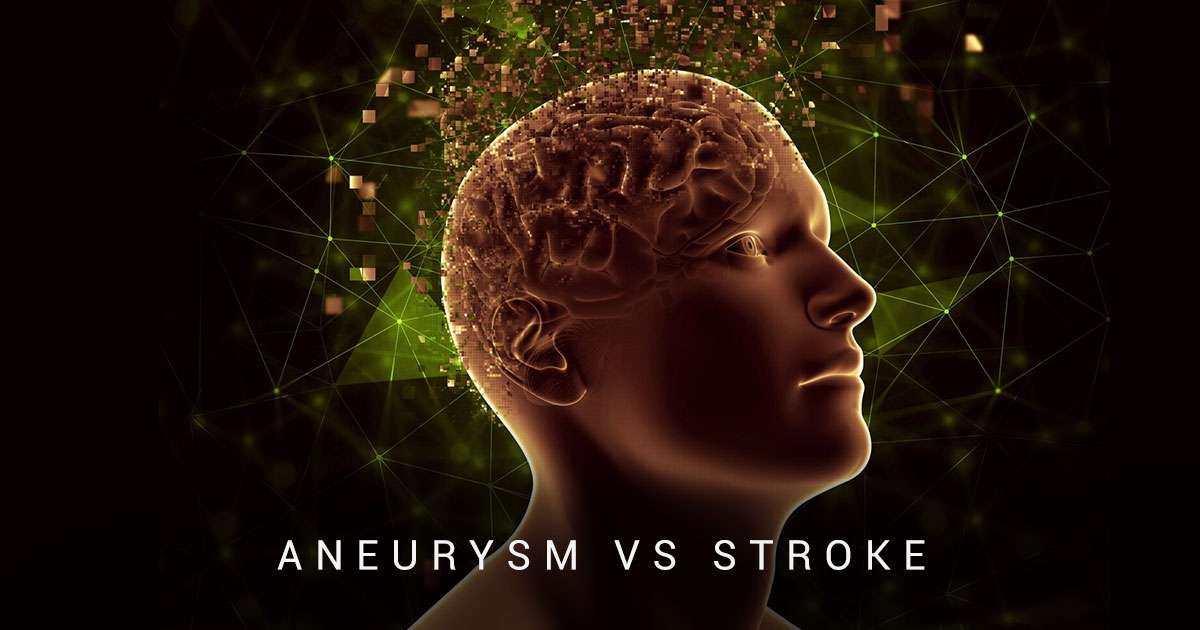Aneurysm vs Stroke: Understanding the Terrain of Brain Health

When we talk about health, especially our brains, two terms often come up: aneurysms and strokes. They might sound similar or related, and in some ways, they are. But they’re two very different things. An aneurysm is like a weak spot on one of the brain’s blood vessels that can swell up, while a stroke is when the brain doesn’t get enough blood, causing damage. Knowing the difference can help us better understand how to protect our brains and what to do if we ever face these issues.
Aneurym vs. Stroke: Understanding Each Life-Threatening Condition
To know the difference between a stroke and an aneurysm, it’s important to understand what each of these dangerous conditions means.
What’s an aneurysm, anyway?
Imagine a balloon. If you keep blowing air into it, there’s a spot that might start to bulge out more than the rest. That’s similar to what happens in an aneurysm, but instead of air, it’s blood pushing against a weak spot in a blood vessel wall. Anywhere in your body, this can happen, but it’s most scary when it happens in your brain. Most of the time, this bulging spot sits there without causing any symptoms. But if it breaks, it’s a major problem because the brain bleeds. If you bleed like this, you could have a stroke.
And Then, There’s Stroke
A stroke happens when part of your brain doesn’t get the blood it needs. There are two main reasons this can happen: either a blood vessel in your brain gets blocked (we call this an ischemic stroke) or a blood vessel bursts (this is a hemorrhagic stroke). No matter which type, strokes are serious because they can cause brain damage, affect your ability to move, speak, see, or even lead to death.
Stroke vs. Aneurysm: The Real Difference
The difference between a stroke and an aneurysm involves many things, such as their symptoms, treatments, and outcomes. Understanding these differences is important for recognizing, managing, and possibly preventing these serious conditions.
Symptoms
Aneurysm Symptoms
- It may not present any until rupture.
- If an aneurysm is big or bursts, it can give you terrible headaches, nausea, vomiting, blurred vision, light sensitivity, and a stiff neck.
Stroke Symptoms
- Sudden numbness or weakness in the face, arm, or leg, especially on one side of the body.
- Don’t know what to say or have trouble understanding what is being said.
- Having trouble seeing with one or both eyes.
- Lack of rhythm, dizziness, or trouble walking are all signs of this condition.
- Bad headache that no one can explain.
Treatments
Aneurysm Treatments
- Monitoring: Small, unruptured aneurysms may only require regular monitoring.
- Surgical clipping: Stop blood flow by putting a small clamp at the aneurysm’s base.
- Endovascular coiling: Inserting coils into the aneurysm blocks blood flow and promotes blood clotting, preventing rupture.
Stroke Treatments
- For ischemic stroke: Blood thinners, clot removal using endovascular procedures, and medications to break down clots.
- For hemorrhagic stroke: Surgery to repair or remove the blood vessel abnormalities, such as aneurysms, and medications to control blood pressure and prevent seizures.
Prevention and Management
Aneurysm
- Controlling high blood pressure, giving up smoking, and living a healthier life can lower the chance of getting an aneurysm and having it burst.
- Regular screening is recommended for those with a family history of aneurysms.
Stroke
- Prevention strategies include controlling high blood pressure, managing diabetes, maintaining a healthy weight, regular exercise, not smoking, and moderating alcohol consumption.
- Immediate medical intervention can help minimize brain damage and potential complications following a stroke.
Outcome and Complications
Aneurysms that rupture can lead to hemorrhagic strokes, causing brain damage, long-term disability, or even death if not promptly treated.
Strokes can result in permanent neurological damage, depending on the area of the brain affected and the timeliness of treatment. Physical, occupational, and speech therapy are all types of rehabilitation that can help with recovery, but they may not fully restore all lost abilities.
Is an aneurysm a stroke?
No, an aneurysm isn’t a stroke, but it can lead to one. An aneurysm is like a weak spot on a blood vessel in your brain that bulges out. If it bursts, it can cause bleeding inside your brain, which might result in a stroke. A stroke happens when part of your brain doesn’t get enough blood, either because of a blockage or because of bleeding, which can harm your brain cells.
Aneurysm vs. Stroke: Manage Each Condition Effectively
Knowing the differences between aneurysms and strokes helps us understand what might be happening in our bodies and how to prevent or treat these conditions. Both can be scary, but with the right knowledge and care, there’s a lot we can do to protect ourselves and our loved ones. Remember, if you or someone you know ever shows signs of a stroke, get medical help immediately—it could save a life.

